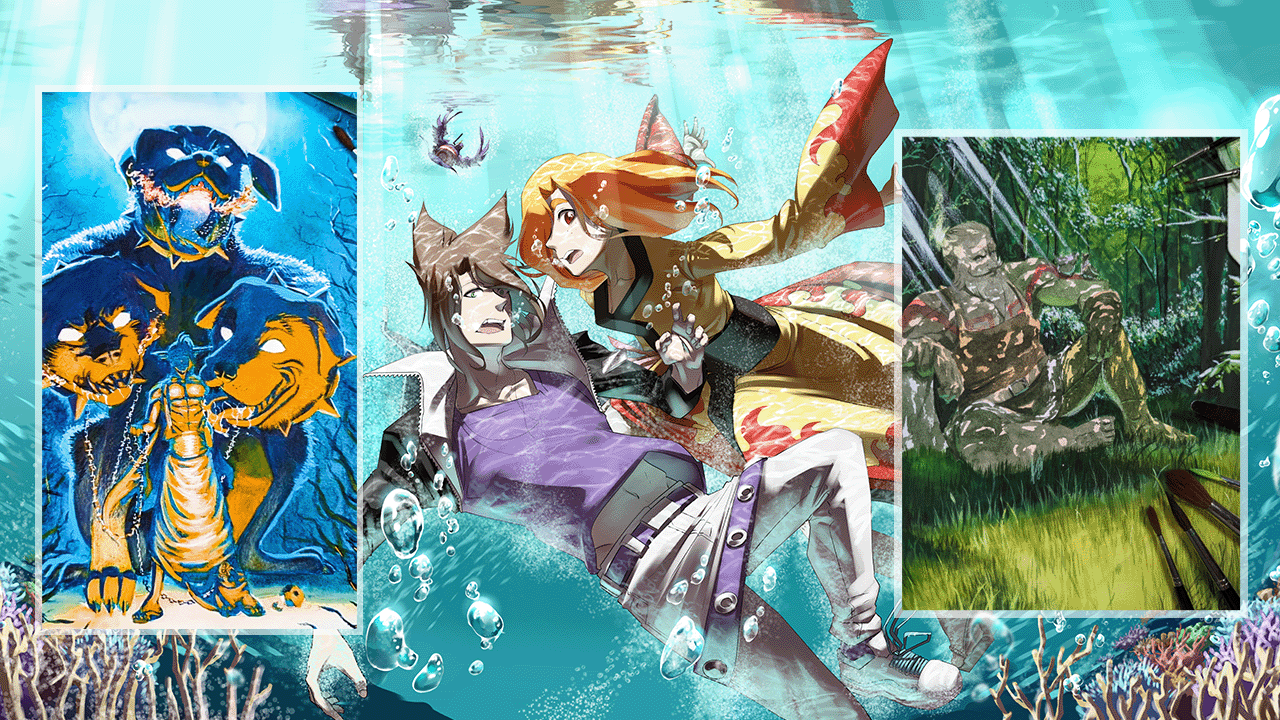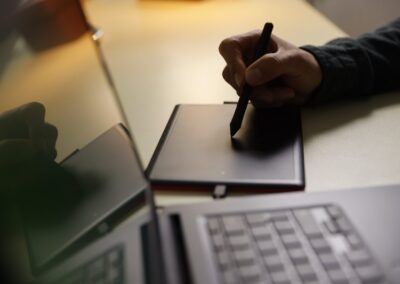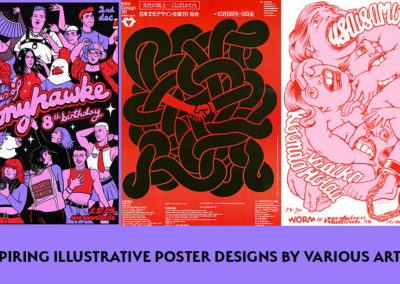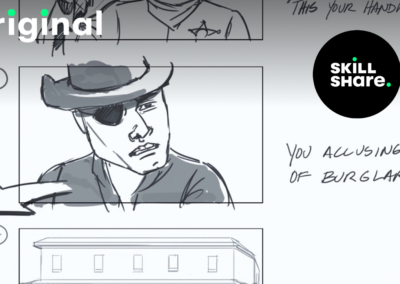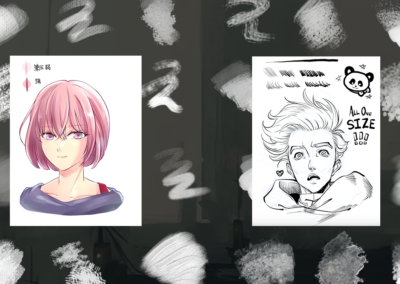Today, we have the pleasure of talking to a remarkable artist who has had a significant influence on the artistic community through his art and content creation.
Marcel, a self-taught illustrator, painter, and animator, has been using his special combination of traditional and digital techniques to create beautiful Manga illustrations and videos of his drawing processes. Known for his YouTube channel as “DLAS” (Draw Like a Sir), Marcel is creating “unfunny drawing tutorials”, as he humorously puts it, and his videos have become a valuable resource for artists of all levels. Today I’m representing Wacom to talk to Marcel to explore his artistic journey, his thoughts on being a self-taught artist, the importance of quantity in practice, and the integration of technology into his creative approach. If you’re already familiar with his work, you’re aware of the talent and skills that we’re about to explore. And if you’re discovering Marcel for the first time, you’re in for a treat!
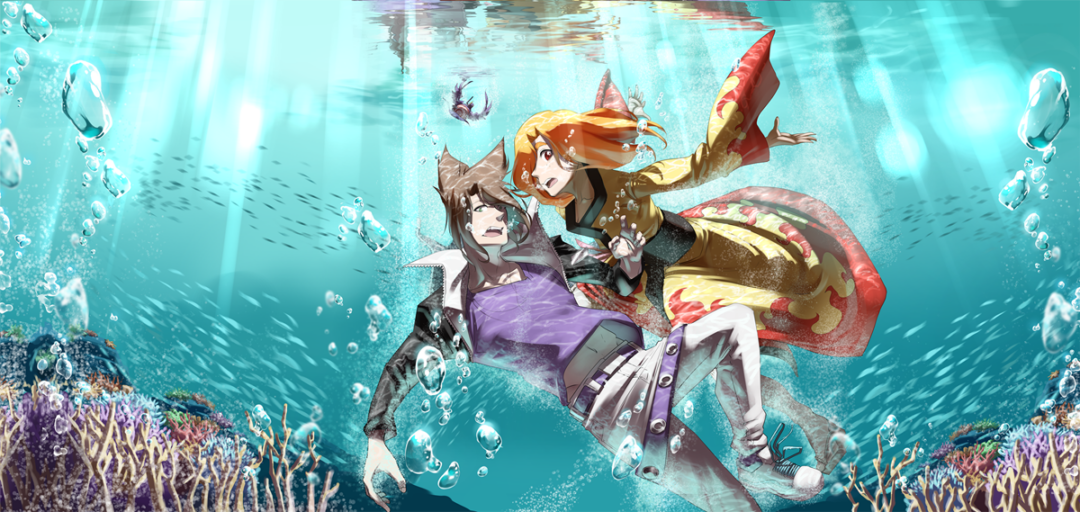
Hi Marcel! We are already familiar with each other; we have been following your work for some time now. For people who may be hearing about you for the first time, can you tell us a bit about yourself?
Sure. Thanks for having me!
I’m a self-taught illustrator, painter, animator, mangaka, filmmaker, author, etc. – basically a person who enjoys creative work to the fullest. Most people probably know me from my YouTube channel “DLAS“ (Draw like a Sir) where I regularly upload content on the topic of drawing and making art.
TLDR; I make unfunny drawing tutorials on YouTube.
Have you had an artistic education or are you completely self-taught? Do you think there would have been a difference in your professional life any other way?
I’m completely self-taught. I honestly don’t know a single artist personally who studied art. A lesson that I had to learn rather early in life is that, in the end, you need to just learn things by doing them. So, whether there’s someone who tells you what to do or not, in the end, you are the one who needs to learn it anyway. That’s why I really doubt there would have been much of a difference if I studied these things professionally. Maybe I could’ve learned things a bit faster because there would’ve been people to enlighten me about what I still need to learn, but where’s the fun in being told the solution rather than figuring out yourself, right? So maybe this could even be a factor that could temper my motivation in making art. So yeah, no regrets in that regard.
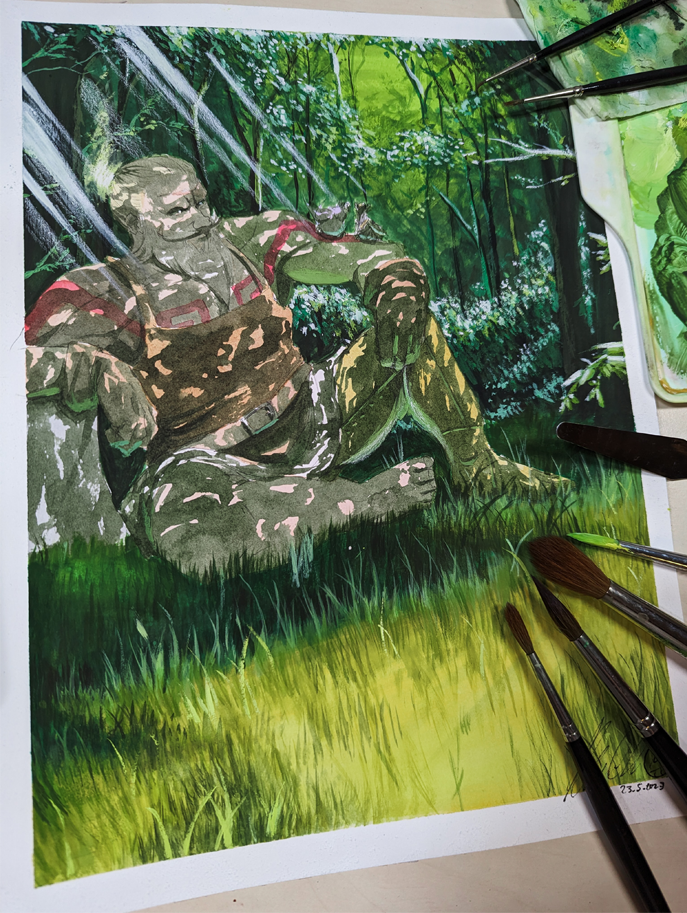
You always provide amazing learning materials for artists, let them be beginners or already experienced in what they are doing. For an absolute beginner, which video/ videos of you would be a good way to start practicing with?
Definitely my “Roadmap video” that you can see here:
Knowing where to start or where to continue could save you an immense amount of time.
Would you be up to giving other artists advice on prioritizing tasks? To be specific; what should an artist spend more time on?
Less thinking, more drawing.
A lot of problems people have at the beginning could be solved by quantity. I’ve also figured out things back in the day without tutorials just by drawing a lot. Knowing where to start and what to practice is a valuable thing, but there’s no “shortcut” or “a tip that could save you years”. What good is theory if you barely have any practice?

You are an established artist with a well-working system; you are managing a YouTube channel, a successful Instagram page, an e-store, and you have books. Very impressive! Are there any tips you can give to other artists like me, who are struggling with time-planning or staying organized?
Thanks for the kind words! I think it’s rather interesting that artists are stereotypically the “chaotic, unorganized” type. I’ve just always been a very tidy and organized person. I have multiple calendars, to-do lists, notes, etc. So, I think it’s just a lucky coincidence that I am this way, otherwise, all these business things, like organizing appointments, deadlines for videos and sponsors, conventions, etc. would probably be way too much to handle.
But one thing people tend to sleep on is a good note app. That makes all the difference. Microsoft OneNote was an absolute game-changer for me.
Noted! Let’s talk about your style. You’ve been in the business for years, do you still feel like your style is continuing to evolve?
I think the more I advance, the more amateurish I feel. I feel like I haven’t even scratched the surface. But maybe that’s just the good old imposter syndrome talking.
Well, if this is just the surface, I’m really looking forward to seeing what is underneath! But do you only draw for work, or do you also draw “just because”? How often do you do it and how much time do you spare for it?
The lines on this topic are a bit blurry. I often start drawing something for fun, but then I somehow find a way to include it in a video of mine etc.
However, I did get myself a custom sketchbook which I like to draw in whenever I can. I just didn’t have time to do it for the last couple of months, haha!
Wishing you a lot of inspiration for your sketchbook 🙂 I’ve been checking your videos and your website where you give information about the tools you use. What do you use traditional tools for, and what do you use digital drawing software or drawing tablets for?
I like to consider myself a traditional artist first and foremost. So, I’m mostly using digital art to plan out an artwork. But everything after the planning stage happens traditionally. I enjoy working with pen and paper way too much.
I’ve also been producing some professional animations, like commercials for bigger brands. These are obviously completely animated on my tablet.

Talking about digital tools, I must ask this question: As you’re probably already familiar with, there have been many debates about the usage of AI and the pros and cons of it, with an increasing number of artists protesting the usage of their work for the purpose of data collection. Do you think it is possible to work around AI, so would it be possible for an artist to stay away from it?
AI is a very polarizing topic, and in my opinion, people are viewing it way too black and white. I think it’s basically just a tool. There are obviously people using it for nefarious purposes, but that’s a very superficial way to look at it. AI can be an incredibly helpful tool when it comes to collecting references or cutting out mundane tasks that can literally save you days of work if you know how to use it. Looking into the foreseeable future, I think artists who know how to utilize AI in a clever way (without using it for dubious purposes, obviously) will have the edge. It’s like with the internet or digital media in general. Most artists who didn’t get into social media or digital art back then are now the ones struggling.
So, I understand that you think it’s important to stay up to date on new technology. Can you also share with us how new technology has affected your artwork so far, with a few examples?
I could not for the life of me imagine a world where 3D references aren’t available anymore. For complicated poses, I always look up 3D models of the specific body parts I’m drawing. Also, as previously mentioned, I’m drafting my more complicated artwork on my tablet first. Especially with multi-layered backgrounds, it’s a nice feature to be able to move certain objects to work on the composition.
You are making great illustrations in Anime style. How did you realize your interest in the genre?
I always liked the Anime-art style. When I was a kid, cartoons always looked a bit too eerie and whacky for my taste. And comics looked too grown-up. Anime was kind of a nice middle-ground between the expressive freedom of cartoons but still took their audience at least halfway seriously the way Marvel or DC comics for grown-ups did. So as a kid, this kind of struck a nerve that still holds up to this day.
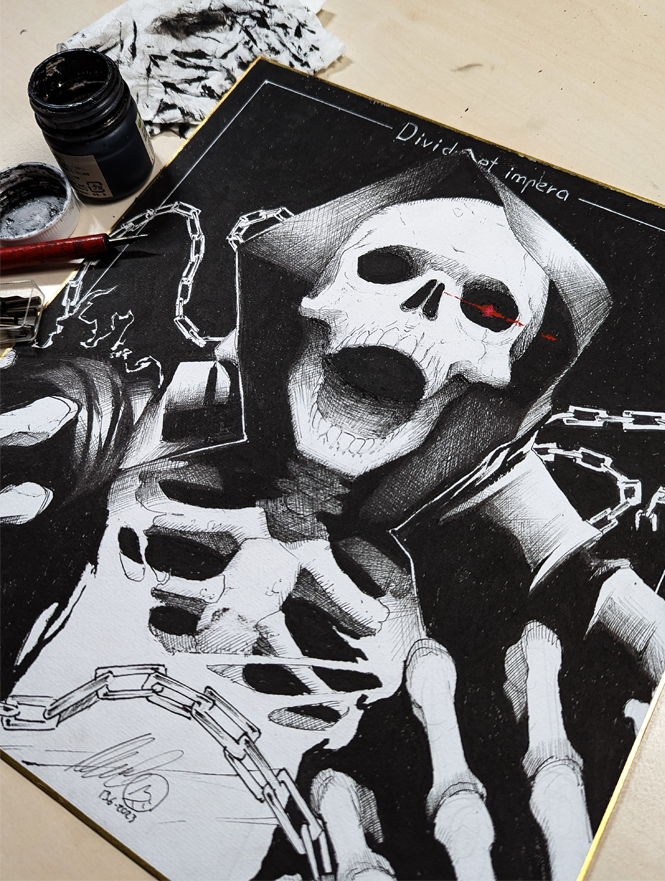
What are your favorite Anime/ Manga movies and shows?
I really like artistic works where you can feel how the artist expresses their creativity in some way. Mob Psycho is always my favorite go-to example.
Do you know many other artists? Do you think that it’s important to hang out with other artists or to collaborate with them?
I always underestimated how hanging out with fellow artists can spark your creativity. Sadly, many of my artist friends are not near where I live. But anytime we meet up at conventions and hang out together, I feel a certain kind of motivation that you get very rarely in everyday life.
Are there any social media tips that you would give to our readers? For example, what kind of posts give the best results in terms of engagement on Instagram?
Social media is ever-changing, so the meta is basically never the same.
At the moment, short-form video content is the absolute best way to get an audience. But if making videos isn’t really your thing, you shouldn’t bother forcing yourself to make things that annoy you. At the end of the day, social media is about the balance of what you want to do vs. what you need to do. Figuring out that balance is the absolute key. But since this balance varies for every person, the only person who could help you with this is yourself.
Since you started your career, what has been the one thing that challenged you the most? Did you ever feel like you were struggling?
Self-esteem or self-value has always been a big issue for me.
People are constantly telling me I’m undervaluing myself. That’s the #1 reason why I’m not taking commissions because I can never really put a price on my craft. It has its pros and cons, I guess I never have to worry about overestimating myself, haha.
Dear Marcel, thank you so much for joining the conversation and sharing your insights and experiences with me and our audience today. We will be on the lookout for more of your beautiful work!
I hope that this interview has been as inspiring for our readers as it has been for us. Marcel’s journey, from creating “unfunny drawing tutorials” to becoming a renowned artist, offers valuable lessons for both aspiring and established artists. It has certainly shed light on a new perspective for me as an artist! For example, his suggestion of “quantity over quality” will be really helpful for me in the future. In addition, I find the perspective on using new technology such as 3D references for drawing very valuable.
Would you also be interested in incorporating new technology into your artwork? Then you should experience drawing on Wacom One and see how its light pen and flawless technology elevates your creative process! Use our dealer finder here to find the nearest Wacom partner store and try out our drawing tablets there. And don’t forget to check out our eStore to see all the models.
If you’re interested in reading more about artwork-related content, check out our other articles below.
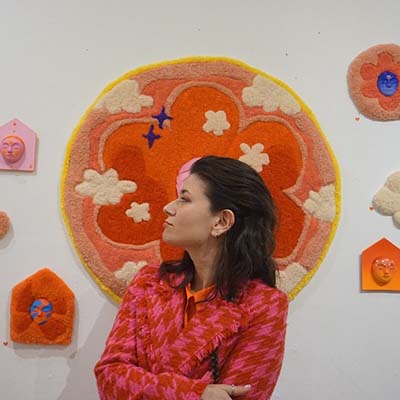
About the author:
Zeynep Alpay is a freelance multidisciplinary artist and illustrator based in Düsseldorf, Germany. Their work encompasses illustrations, animations, paper cut-outs, and traditional artwork.
For more information or to see more of Zeynep’s works, check their portfolio on Behance, their LinkedIn, their Instagram, or their Twitter.

